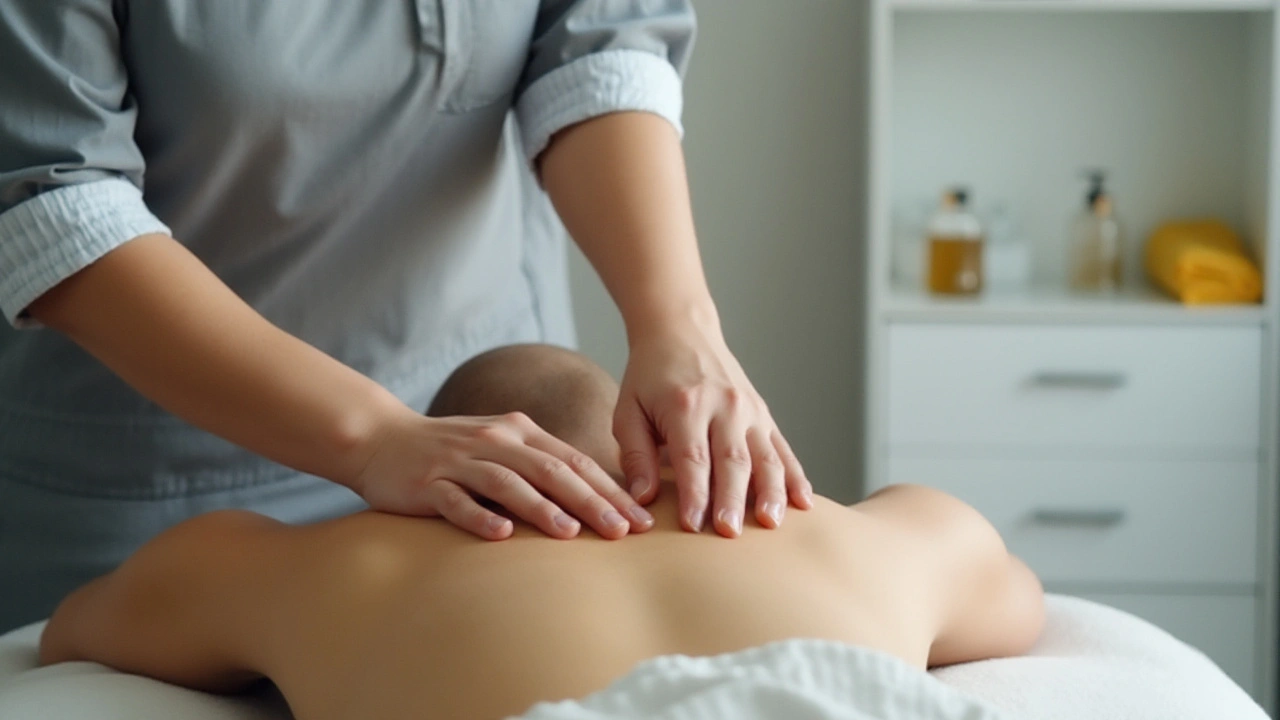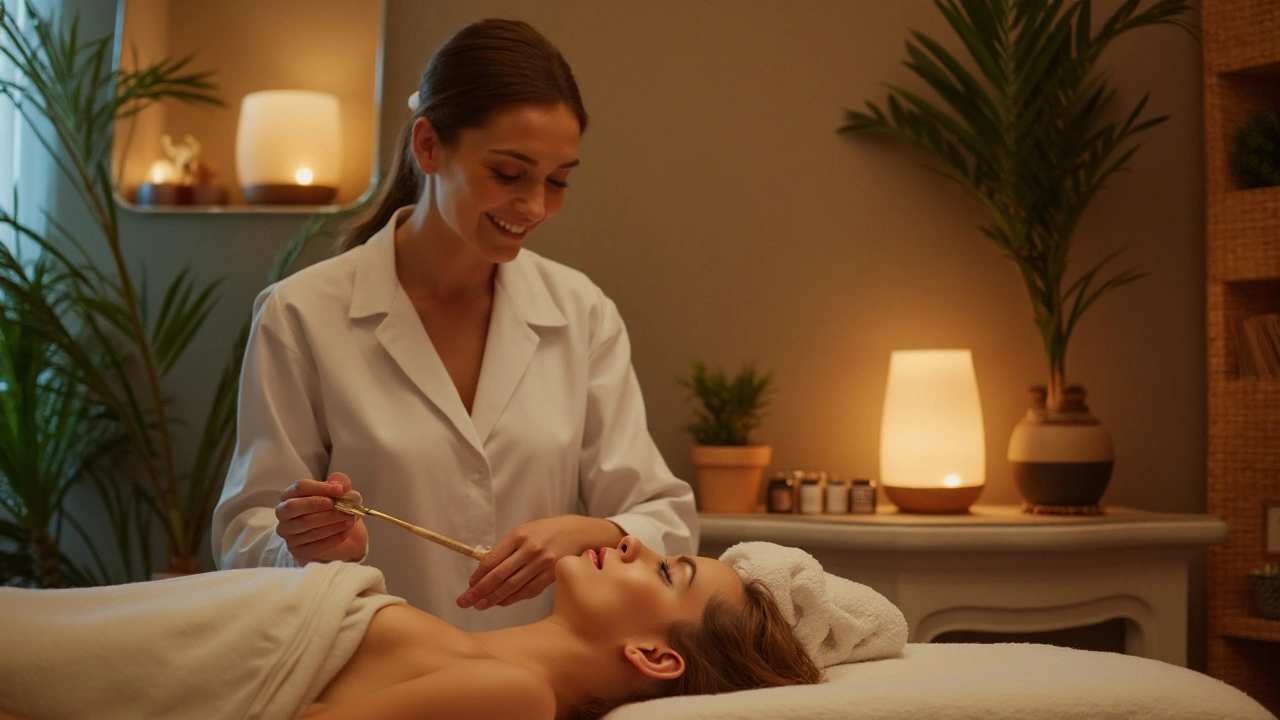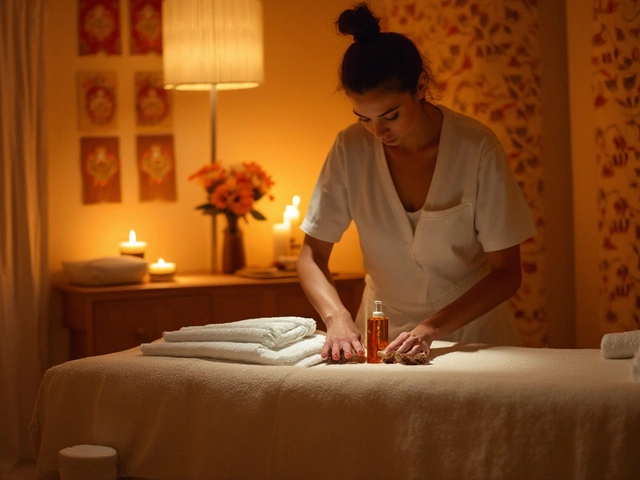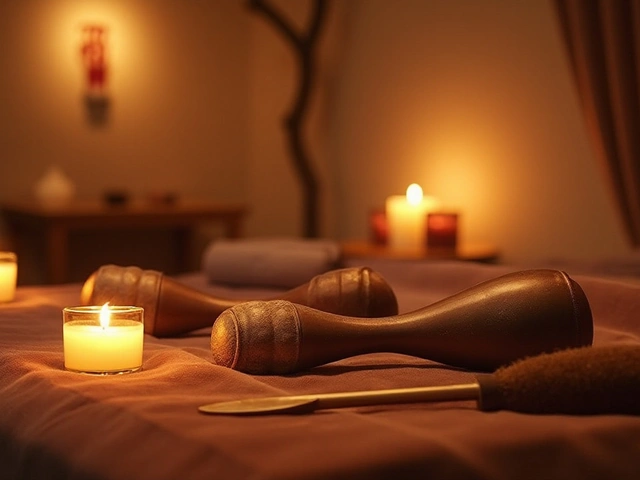Body-to-body massage is an intimate and therapeutic experience. It offers profound relaxation and can help with various physical and emotional issues. However, ensuring safety throughout the process is crucial.
Understanding the basics, maintaining hygiene, ensuring clear communication, and picking the right therapist are key to a safe and enjoyable session. Let's dive into these essential tips that will help you get the most out of your body-to-body massage while keeping health and safety front of mind.
- Understanding Body-to-Body Massage
- Hygiene and Cleanliness
- Communication and Consent
- Choosing the Right Therapist
Understanding Body-to-Body Massage
Body-to-body massage is a unique form of therapeutic touch that emphasizes the connection between the giver and the receiver. This massage technique involves the therapist using their own body to create a fluid, dynamic, and deeply relaxing experience. Unlike traditional massages that rely on the hands and fingers, this style uses the full extent of the body, including the torso, legs, and arms. The physical contact is more extensive, which can provide a greater sense of intimacy and relaxation.
One of the primary benefits of a body-to-body massage is the profound sense of relaxation it can provide. The continuous skin-to-skin contact helps to release endorphins, the body's natural feel-good hormones, which can alleviate stress and promote emotional well-being. Additionally, this type of massage can improve circulation, flexibility, and muscle tone, making it a holistic approach to health and wellness.
However, the intimate nature of body-to-body massage means that there are several key considerations to keep in mind to ensure safety and comfort for both parties. It's essential to establish clear boundaries and communicate openly. Misunderstandings or discomfort can quickly turn a therapeutic experience into an uncomfortable one. Therefore, mutual respect and understanding are paramount.
“The art of massage goes beyond mere physical touch; it's about understanding the body, mind, and spirit of the individual,” says Dr. Jane Harris, a renowned massage therapist and author of 'The Healing Touch.' “In a body-to-body massage, this connection is even more important.”Preparation is another crucial aspect. The environment should be clean and sanitized, and both parties should be aware of any medical conditions or allergies that could impact the session. It's also advisable to use high-quality, skin-friendly oils or lotions to reduce friction and enhance the overall experience.
It's worth noting that the origins of body-to-body massage can be traced back to ancient traditions. Various cultures have recognized the benefits of full-body contact for centuries. Whether it's the Nuru massage from Japan or the Thai body-to-body techniques, these practices emphasize the importance of human touch in healing and relaxation.
In recent years, body-to-body massage has gained popularity in Western countries, reflecting a growing appreciation for its therapeutic benefits. As more people seek alternative methods for stress relief and holistic health, this form of massage offers a unique and effective option. By understanding its intricacies and taking the necessary precautions, both therapists and clients can enjoy the full range of benefits it offers.

Hygiene and Cleanliness
When it comes to body-to-body massage, hygiene plays a critical role in ensuring both the client and therapist have a safe and enjoyable experience. Maintaining high hygiene standards prevents the spread of infections and creates a comfortable and respectful environment.
First, both the client and therapist should shower before the session. This ensures that any dirt, sweat, or oils are washed away, creating a clean slate for the massage. Clean, dry towels and linens should be used, and they should be changed between clients to maintain cleanliness.
Hand hygiene must be prioritized as well. Therapists should wash their hands thoroughly with soap and water before and after the massage. Using hand sanitizer can be an additional precaution to eliminate any remaining germs. Clients should also wash their hands or use hand sanitizer before the session begins.
According to the American Massage Therapy Association, “Proper sanitation is the foundation of a professional massage practice.” This underscores the importance of cleanliness in creating a professional and safe environment.
It’s also essential for therapists to ensure that all equipment, including massage oils, lotions, and tools, is sanitized before each use. Using disposable containers for oils and lotions can minimize the risk of contamination. Ensuring the room is well-ventilated and free from any strong odors will also create a more pleasant atmosphere.
If either the client or therapist has any open cuts or wounds, these should be fully covered with a bandage to prevent any infection. It’s also important to avoid massaging areas with any skin infections, such as rashes or fungal infections, to prevent spreading these conditions.
Let’s not forget about the emotional aspect of hygiene. Creating a clean environment extends to a clean mental state. A clutter-free room with calming music and scents can significantly enhance the experience, allowing both parties to relax and focus solely on the therapeutic benefits of the session.
To sum up, maintaining high hygiene standards in body-to-body massage sessions is not just a preference, it’s a necessity. It involves taking several important steps, from personal cleanliness and proper sanitation of equipment to creating a clutter-free, peaceful environment. Keeping these tips in mind can help ensure a safe, comfortable, and ultimately more effective massage experience.

Communication and Consent
When it comes to body-to-body massage, clear and open communication is essential. Before the session begins, the client and therapist must have an honest conversation about expectations, boundaries, and comfort levels. This step is crucial for establishing trust and ensuring that both parties are on the same page.
Clients should feel empowered to speak up about their preferences, whether it’s the amount of pressure applied, areas of focus, or any specific concerns. Therapists, in turn, should listen actively and respect the client’s wishes. Open communication helps avoid misunderstandings and ensures that the massage experience is tailored to the client’s needs.
Consent should be explicit and ongoing. Before starting, the therapist should explain the techniques they plan to use and seek the client’s approval. During the massage, therapists should check in with the client periodically to ensure they are comfortable and consent to the continuation. If at any point the client feels uneasy, they must have the freedom to voice their concerns and, if needed, stop the session.
“Consent is an ongoing process, and it’s vital to approach it with sensitivity and respect in any therapeutic setting,” says Dr. Jane Smith, a renowned expert in therapeutic practices.
Another key aspect is privacy. Clients have the right to a discrete and confidential environment. Personal information and concerns shared during the session should remain private, fostering a safe space for clients to relax and fully benefit from the massage.
Additionally, having a preliminary session or consultation can be very beneficial. It allows clients to ask questions, discuss any medical conditions or past injuries, and establish a rapport with the therapist. This step not only builds comfort but also provides the therapist with the necessary context to perform a safe and effective therapeutic massage.
When these elements of communication and consent are in place, it creates a strong foundation for a positive massage experience. Both the client and the therapist can then focus on the therapeutic benefits, trusting that boundaries will be respected and preferences will be honored.

Choosing the Right Therapist
Selecting the appropriate therapist for a body-to-body massage is a pivotal step in ensuring a safe and beneficial experience. One of the first things to consider is the therapist's qualifications and certifications. A qualified therapist should have formal training and be certified by a recognized institution. This ensures they have a solid understanding of human anatomy, massage techniques, and proper hygiene practices. It's crucial to verify these certifications before making an appointment.
Experience also plays a significant role. A therapist with years of practice will have a better understanding of how to tailor the massage to individual needs. They can adjust their techniques to accommodate any specific concerns or conditions you may have. It's worth asking for testimonials or reviews from previous clients to get a sense of the therapist's expertise and professionalism. You can find these reviews online or through word-of-mouth recommendations.
Another critical aspect is the therapist’s approach to communication. A good therapist will take the time to understand your preferences and any areas that may need extra attention or care. They should ask about your health history and any injuries you might have. Clear and open communication can prevent discomfort and ensure the massage is both safe and enjoyable. Always feel empowered to voice any concerns or preferences during your session.
The environment where the massage takes place should also be considered. A professional setting with a clean, calm, and welcoming ambiance can significantly enhance your overall experience. The therapist should maintain high standards of cleanliness to prevent infections and ensure your comfort. This includes the hygiene of the massage table, linens, and their own personal cleanliness. Trust your instincts if you notice any red flags in the environment.
“The most important thing when choosing any healthcare provider, including a massage therapist, is to find someone you feel comfortable with and who listens to your concerns,” says Dr. Samantha Young, a wellness expert.
Cost is another factor to consider, but it shouldn't be the only determining factor. While it’s important to find a therapist within your budget, the cheapest option is not always the best. Investing in a reputable and qualified therapist can make a significant difference in the quality and safety of the massage. Remember that you are investing in your health and well-being, so choose wisely.
Lastly, consider the therapist's specialty. Some therapists specialize in therapeutic massage for relaxation, while others may focus on treating specific conditions like chronic pain or sports injuries. Make sure the therapist's expertise aligns with your needs. Asking specific questions about their training and approach can help you determine if they are the right fit for you. By taking the time to choose the right therapist, you can ensure a safe, relaxing, and beneficial body-to-body massage experience.






